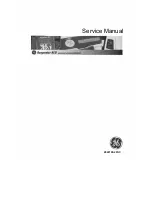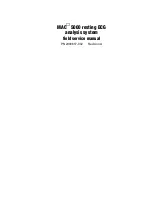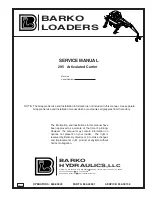
7.
If the level is low, add enough fluid to raise it to
the proper level.
8.
Install the filler cap.
9.
Lower the bracket.
Replacing the Hydraulic
Filters
Important:
Do not substitute an automotive oil
filter; otherwise, severe hydraulic system damage
may occur.
1.
Remove any attachments.
2.
Park the machine on a level surface and engage
the parking brake.
3.
Raise the loader arms and install the cylinder
locks.
4.
Shut off the engine, remove the key, and allow
the engine to cool.
5.
Remove the front cover; refer to
Front Cover (page 44)
.
6.
Place a drain pan under the filter and replace
the filter.
g031621
Figure 101
7.
Clean up any spilled fluid.
8.
Start the engine and let it run for about 2 minutes
to purge air from the system.
9.
Shut off the engine and check for leaks.
10.
Check the fluid level in the hydraulic tank; refer
to
Checking the Hydraulic-Fluid Level (page
and add fluid to raise the level to mark on
dipstick.
Important:
Do not overfill the tank.
11.
Install the front cover.
12.
Remove and store the cylinder locks and lower
the loader arms.
Changing the Hydraulic
Fluid
1.
Park the machine on a level surface, engage the
parking brake, and lower the loader arms.
2.
Shut off the engine and remove the key.
3.
Place a large drain pain capable of holding 57
L (15 US gallons) under the drain plug on the
hydraulic tank.
g363374
Figure 102
1.
Drain plug
4.
Remove the drain plug and allow the oil to drain
into the pan.
5.
When the oil is finished draining, install and
tighten the drain plug.
Note:
Dispose of the used oil at a certified
recycling center.
6.
Fill the hydraulic tank with hydraulic fluid; refer
to
Hydraulic-Fluid Specifications (page 62)
.
7.
Start the engine and let it run for a few minutes.
8.
Shut off the engine and remove the key.
9.
Check the hydraulic-fluid level and add fluid to
fill the tank if necessary; refer to
Hydraulic-Fluid Level (page 62)
.
63










































